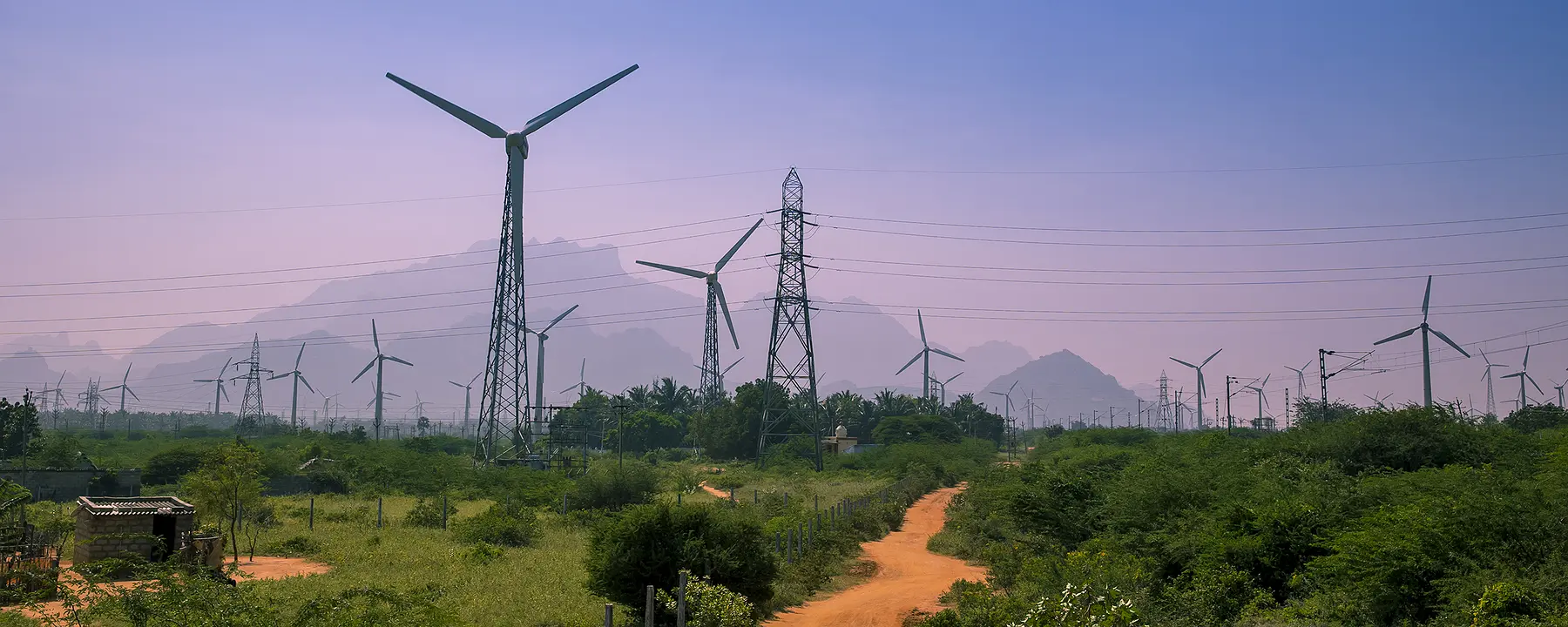Improving access to affordable, secure, reliable, and sustainable energy
Objective
To improve access to affordable, secure, reliable, and sustainable energy in six South Asian countries.
Approach
We will promote advanced, innovative energy technologies, solutions, and business models by empowering and building capacity of local public and private partners and leveraging investment in clean energy infrastructure.
Impact
This project accelerates the region’s transition to clean energy, mitigates climate change, and promotes energy security, economic development, and livelihoods.
With some of the most densely populated and fastest growing economies in the world, South Asian countries have increasing energy needs. The region’s electrification rate has increased over the past 20 years: from an estimated 62 percent to upwards of 90, according to the International Energy Agency. This has advanced development in the region, but continued dominance of fossil fuel has deleterious effects on the region’s air quality and the planet’s climate.
Recently, South Asia has made substantial progress in providing reliable, clean energy to its citizens, and the region’s leaders have increased their renewable energy targets. India, for instance, achieved over 150 gigawatts (Gw) of installed renewable energy, well on its way to its Paris Agreement target. The country has dramatically increased its ambition to reach 450 Gw by 2030, but to reach this target, much remains to be done.
To support the region’s energy and climate targets, the South Asia Regional Energy Partnership (SAREP), funded by the U.S. Agency for International Development (USAID), is working to improve access to affordable, secure, reliable, and sustainable energy in six South Asian countries—Bangladesh, Bhutan, India, Maldives, Nepal, and Sri Lanka.
As leader of the SAREP Consortium, we are working alongside regional, national, and international partners with deep expertise in clean energy, utility modernization, cross-border trade, public-private partnerships, and investment analysis and mobilization. Over the five-year life of the project (2021–2026), SAREP aims to leverage $7 billion worth of investment in power infrastructure, deploy 5,000 megawatts of clean energy, save more than 435 gigawatt-hours of energy through increased energy efficiency, and facilitate four terawatt-hours’ worth of cross-border trade.

SAREP will also serve as a regional energy hub, enhancing coordination among stakeholders, leading communications and outreach efforts, and consolidating the monitoring and reporting on USAID energy programs in South Asia.
Transforming South Asian Energy Sectors
SAREP will use targeted action and drive system-level change by engaging policymakers, regulators, utilities, think tanks, investors, and others in the private sector to achieve several key objectives.
The first is enhancing and integrating regional energy markets. With improved coordination and planning, stronger national and regional institutions, and supporting frameworks, cross-border electricity trade can increase and lead to a more energy-secure South Asia.
SAREP will enhance and accelerate the deployment of clean energy technologies in electric mobility, renewable energy integration, energy storage, and green hydrogen, among other activities, to help partner countries reach their near-term climate goals and avoid locking in longer-term emissions trajectories. Advancing and deploying these clean energy technologies now will pave the way for the transition to net zero emissions.
The program is also supporting utility modernization and improved financial viability, strengthening utilities’ capacity to manage increased renewable generation and engage in efficient in efficient energy markets. SAREP will assist utilities to upgrade their technical, financial, and operational performance while boosting the grid resilience, enhancing their customer service, and promoting their adaptability to advancements in clean energy technology.
Finally, SAREP expects to mobilize the private sector to expand investments and enhance domestic and international finance for clean energy deployment. The program will facilitate transparent, best-value procurement practices, promote public-private partnerships and good governance, and improve the bankability of clean energy projects.
A Regional Model for Clean Energy Solutions and Climate Sustainability
SAREP builds on USAID’s successful legacy of energy sector projects over five decades and serves as the regional anchor project of the U.S. Government’s Asia Enhancing Development and Growth through Energy (EDGE) initiative, which is strengthening energy security and expanding access to energy across the Indo-Pacific region.
Across its activities, SAREP’s inclusive and gender-diverse programming ensures under-represented people are part of the solutions for securing sustainable change and promoting equitable growth.
Its regional scope allows SAREP to draw on examples and strengths from across South Asia, sharing and adapting new technologies, approaches, and ideas. What works well here may serve as a model for other regions hoping to secure more reliable, equitable, and clean energy for their citizens.
As South Asia works to recover from COVID-19 and accelerate socio-economic development, the region has an opportunity to lead by example by transforming its energy system into an engine for clean electrification.
With increased financing and energy policies more oriented toward sustainability, South Asia can expand energy access, enable markets to drive efficiencies, and reduce environmental impacts, leading to better outcomes across societies, including in health, agriculture, and education.
Learn more about our projects and expertise in energy and climate change solutions.
- U.S. Agency for International Development (USAID)
- PTC India
- Cross Boundary
- Asia Clean Energy Partners
- e-Gen
- Fichtner India


